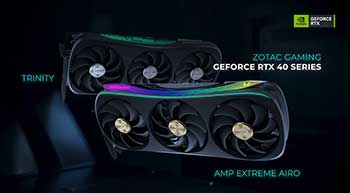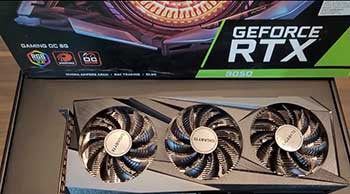When building a new gaming PC or upgrading your existing system, choosing the right graphics card is one of the most important decisions. Two popular brands for Nvidia-based graphics cards are Zotac and Gigabyte.
But which one is better for your needs? This detailed comparison of Zotac Vs. Gigabyte will examine the key differences between the two brands to help you decide.
A Brief Comparison Table
| Features | Zotac | Gigabyte |
| Pricing | More budget-friendly, lower cost | Prices tend to be higher |
| Performance | On par with Gigabyte, great for 1080p/1440p gaming | Similar performance to Zotac, excellent for high-end gaming |
| Cooling | Decent dual/triple fan designs, less overclocking headroom | Robust cooling on high-end cards optimized for overclocking |
| Noise | Can be louder under load due to smaller fans | Runs quieter thanks to larger cooling fans |
| Size | Many compact models good for small builds | Larger cards may take up 2.5-3+ slots |
| Aesthetics | Understated design, muted colors | Flashy style with customizable RGB lighting |
| Brand Reputation | Respected brand but less history than Gigabyte | Longstanding trusted brand for PC components |
| Warranty | Typically 2-3 years | Up to 4 years on high-end cards |
Overview Of Zotac And Gigabyte

Zotac is a Hong Kong-based brand that is relatively new to the GPU scene compared to tech giants like Gigabyte. Founded in 2006, Zotac initially focused on making Nvidia-powered motherboards. The company expanded into graphics cards in 2008 and is now one of the major global brands for Nvidia GeForce GPUs.
Gigabyte is a well-established Taiwanese brand founded in 1986. Along with its computers and components, Gigabyte is a leading manufacturer of AMD and Nvidia graphics cards. The company is known for its high-end GPUs targeted at enthusiasts and overclockers.
Both Zotac and Gigabyte offer a range of Nvidia GeForce graphics cards to suit different budgets and needs. When comparing between these two brands, key factors to consider are performance, cooling, noise, overclocking, design, and price.
Performance
When it comes to sheer gaming performance, Zotac and Gigabyte graphics cards are fairly matched. Both brands produce cards that perform on par with other variants based on the same Nvidia GPU.
For example, benchmark tests show the Zotac GeForce RTX 3060 Twin Edge performs virtually the same as the Gigabyte RTX 3060 Vision OC. Differences come down to factory overclocking, power limits, and cooling rather than the underlying GPU architecture.
Top-tier cards from both brands can handle demanding games at 4K resolution with max settings enabled. You’ll enjoy smooth high-FPS gameplay at 1440p as well. Performance typically won’t be the deciding factor between Zotac Vs. Gigabyte.
Cooling And Noise

Cooling is where Gigabyte pulls ahead on high-end models designed for overclocking and enthusiast rigs. Cards like the Aorus line utilize a beefy cooling system with three fans, a stacked fin heatsink, and multiple copper heatpipes. This enables high boost clocks while keeping the GPU chilled.
Zotac takes a simpler approach to cooling on most cards. You’ll see dual and sometimes triple fan configurations with decent heatsinks. This is enough for stock-clocked gaming but leaves less headroom for pushing the GPU further. Noise levels favor Gigabyte too thanks to its larger fans that don’t need to spin as fast.
But Zotac isn’t completely outclassed on cooling. Entry-level and compact cards like the Twin Edge OC still run quiet and cool for moderate gaming. Gigabyte’s lower-cost cards may resort to single fans and smaller heatsinks that are noisier under load.
Overclocking
Tying into cooling, Gigabyte is in a better position for overclocking your graphics card. Flagship Gigabyte models come with reinforced power phases, premium components, and robust heatsinks tailored for overclocking. This gives you more headroom to bump up GPU/memory clocks and voltages compared to base Zotac models.
Zotac cards are less optimized for overclocking out of the box. But cards like the Amp Extreme line do feature beefed up power delivery and fans ideal for pushing the limits. For basic automatic GPU boosting, Zotac and Gigabyte are comparable. Serious enthusiasts will get more overclocking mileage from pricier Gigabyte offerings.
Design
Aesthetics and size are other notable differences between the two brands. Zotac graphics cards usually have a minimalist, understated design. Colors are muted and the shroud has a smooth, basic shape. Size-wise many Zotac cards have compact lengths ideal for small form factor builds.
Gigabyte on the other hand is flashier with angular shrouds, customizable RGB lighting, and bigger dimensions. Models like the Aorus and Gaming OC take up more space with 2.5-3+ slot designs. But they look great showcased in a windowed case. It comes down to visual preference between the styles.
Also Read: Differences Between Zotac And Nvidia.
Price
One advantage of Zotac is that its graphics cards are often cheaper than competing Gigabyte models. For example, the Zotac RTX 3060 Twin Edge goes for around $330 while a similar Gigabyte RTX 3060 Vision OC is priced closer to $400. You’ll typically pay less for a base Zotac card than a decked-out Gigabyte counterpart.
That said, top-of-the-line options can be similarly priced between the brands. And Gigabyte has decent cost-effective options too like the Eagle series. But you can usually save some money opting for Zotac over Gigabyte if cost is your main concern. Just expect fewer premium features and less overclocking headroom.
Which Is Better For You?
So, when choosing between Zotac Vs. Gigabyte graphics cards, which brand should you pick? Here are some key considerations:
- Budget Buyers – Zotac offers better value for those seeking the lowest cost. You still get good 1080p/1440p gaming performance.
- Overclockers – Gigabyte has higher-end cards optimized for pushing clocks further with robust power and cooling.
- Small Form Factors – Zotac’s compact card designs are great for mini-ITX and SFF cases with limited space.
- RGB Fans – Gigabyte cards boast flashy customizable lighting on many models if aesthetics matter to you.
- Noise-Sensitive – Larger Gigabyte coolers generally run quieter versus smaller Zotac ones under load.
For most gamers shopping in the mid-range bracket, the performance will be very similar between Zotac and Gigabyte.
Also watch the video!
But Zotac costs less while Gigabyte offers more features and design. Ultimately it depends on your specific priorities and budget when choosing between these two reputable Nvidia card makers.
Frequently Asked Questions (FAQ)
It’s close between Zotac and MSI for Nvidia graphics cards. In terms of performance, they are nearly on par. MSI stands out for having premium cooling on high-end cards.
But Zotac cards are often a bit cheaper while still capable of great 1080p and 1440p gaming. For value seekers, Zotac has an edge, while serious overclockers may prefer MSI.
Yes, Zotac makes reliable graphics cards that perform as expected. While Zotac doesn’t have all the bells and whistles of pricier brands, their GPUs use quality components and engineering that meets the demands of most gamers and PC builders.
Reviews consistently show Zotac cards like the RTX 30 series stack up well against the competition.
There is no definitive “better” between Zotac and Gigabyte overall. Gigabyte has more premium features focused on overclocking and cooling but carries a higher cost. Zotac is considered a good budget alternative. Zotac also offers compact card designs. For most mid-range buyers, the brands will provide comparable real-world gaming speeds.
A few reasons make Zotac cards less expensive than competing brands like Gigabyte:
Simpler cooling designs with smaller heatsinks and fans
Less RGB lighting and cosmetic frills
Not as overclocking-focused with fewer high-end components
Retail directly to consumers unlike third-party graphics card makers
Tighter profit margins to remain competitively priced
The savings don’t compromise too much on everyday gaming performance. But expect less overclocking headroom and features.
Also Read: Is Zotac GPU Better Than Asus?
Conclusion
Both Zotac and Gigabyte produce quality graphics cards that offer great performance for gaming and other graphics-intensive tasks. When choosing between these two brands, it really comes down to your specific needs and budget.
For budget-conscious buyers, Zotac tends to offer graphics cards at slightly lower prices than the comparable Gigabyte models. Zotac’s cards still deliver solid performance and cooling, but some of the higher-end Gigabyte cards may edge them out when it comes to overclocking headroom and cooling potential.
On the other hand, Gigabyte’s cards often come with premium features like RGB lighting, metal backplates, and top-notch cooling solutions. So if you want the absolute best performing card with all the bells and whistles, Gigabyte models like the AORUS series are worth the extra cost.
Ultimately, both Zotac and Gigabyte make excellent graphics cards. Zotac provides great bang for your buck, while Gigabyte focuses more on premium design and max performance. For most gamers, either brand would serve you well – go with Zotac if budget is your primary concern, or Gigabyte if you want the utmost gaming experience.

